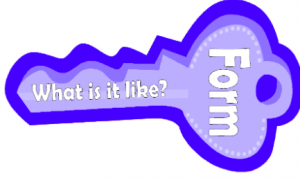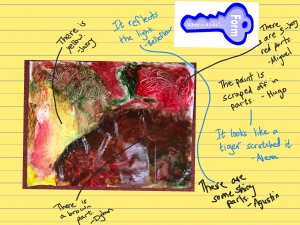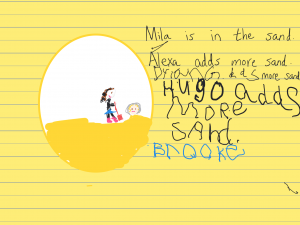I’ve been thoroughly immersed in exploring the #IBPYP enhancements since the first previews have been available. I have studied and discussed them to the point of geek-like status, excited about the implications they bring for teaching and learning. There is a cushion for teachers and schools to transition gradually as they learn the new version of the program. However, the idea is that the IB has made improvements based on current research. Why not be proactive and start learning and implementing where I can? I’m grateful to my regional colleagues, who have participated in the #pypchat IBAEM recently. This chat has recently served as a forum to collaboratively unpack the enhancements and discuss implementation. I was particularly inspired by a discussion on transdisciplinary learning. This blog post, and the day in my Kindergarten class which it describes, is inspired by that discussion.
Transdisciplinary or Disciplinary?
I have been thinking about transdisciplinary learning for a long time. What should it look like? How can we support it? Do individual disciplines even have a place? I’ve heard many arguments for that one, by the way, and I am still not ready to take a stance. However, I am ready to explore making my program more transdisciplinary and I am willing to take some risks and see where they take my students.
Key Concept Drives the Day
Form is one of the key concepts for our current Kindergarten unit, “Communicating Through Art.” I decided to weave our focus on that key concept much more explicitly throughout our time together in homeroom and linked it to each part of our day. We started by discussing form in our morning meeting. Students then spent the day exploring form, and the idea that we can describe things by looking closely and that we can also make decisions to determine what our own creations are like. This is how the day focusing on form unfolded:
Art Exploration to Get Us Started
Our mornings always start out with open or guided play. For this morning, we set out a variety of art materials to serve as provocations for our Kindergarten students as they entered the room. They had access to fingerpaints, oil pastels, color pencils and markers, playdough and a variety of paper. They were not disappointed. Almost an hour of art exploration ensued, sparking ideas, generating vocabulary and inspiring creativity. Several students collaborated on a piece of art with fingerpaints, discovering how their technique could change the way their project looked and felt with each change they made.
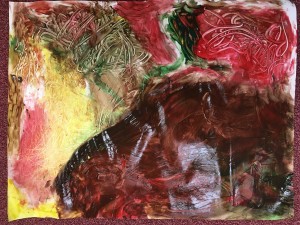
Those artists were quite excited about their creation and were keen to share. We took a photo and posted it on the big screen in our meeting area. Then the whole class had a go at describing what they saw, using the Visible Thinking Routine, “Looking 2 x 10.” Of course, we discussed how their descriptions connected to the key concept of form.
A Little Math
Later in the day, students investigated their names. Again, we revisited the idea that we were focusing on form. They noticed and described how many letters they had, which letters were first, which happened more often or which didn’t happen at all. Next, they compared their names to other names in our community, noticing which names were longer or shorter. Some students started counting the differences as well. One Kindergartener pointed out that some names could be made long or short, using mine as an example. “You could be short (Jen) or long (Jennifer)! An investigation into which names could be shortened or lengthened ensued.
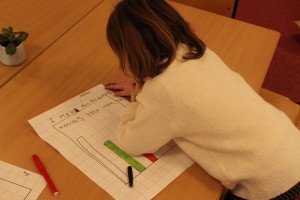
Form in Writer’s Workshop
Later in the day, we worked on this piece together at the start of our writer’s workshop. We selected the topic (when they buried a friend in the sand at recess) and shared the pen to create the text. As we continued writing, one excited writer exclaimed, “Wait! I noticed something! There’s a pattern, just like in Tabby Cat ” (the pattern book they had read the day before). I love those moments. You know, the ones where you feel sure that someone must have paid the kid to say what they did? In any case, this exclamation led to a discussion reviewing patterns, a concept that has been explored in maths and reading earlier this month and now was extended by connecting it to the key concept of the day. When it was time for the students to go off to their independent writing, many worked on using details in pictures, letters and words to make their stories follow a pattern, just like the ones they are noticing in their reading books and in our shared story from the minilesson.
Reflecting on the Day
Probably the best evidence for how explicitly weaving the key concept through the day and the disciplines worked, is in what the students said and did after. The next day, during the same morning play time, most students chose to continue to play through art. The effects were already showing. Our young artists were clearly playing around with form, manipulating and combining materials in new ways. The casual discussions with fellow artists were rich with newly acquired vocabulary as the students commented on each other’s use of color, the “scraping” technique and different materials to make their art look a certain way. Comparisons were being made between common elements in each others’ creations.
I will definitely keep finding ways to focus our learning through the key and related concepts as I can already see transfer across days, ideas and disciplines. Most importantly, I can see evidence of transfer beyond the context of our art unit! Next week I have a mini-case study of Mondrian planned, linked first to form and then to perspective. The inquiry is planned to integrate maths, visual arts, and literacy to start but let’s see where the students take it!
In the meantime, I would love to hear your feedback! I would also love to hear how other teachers are supporting transdisciplinary learning in their classrooms.
